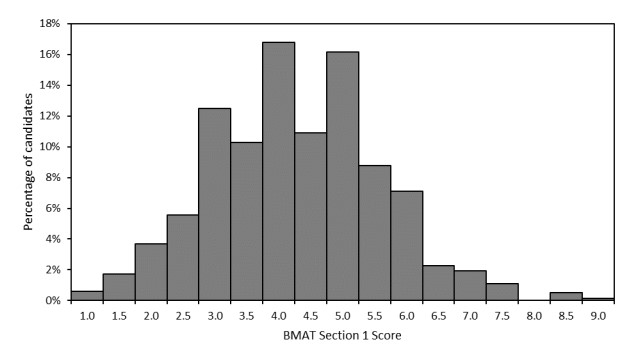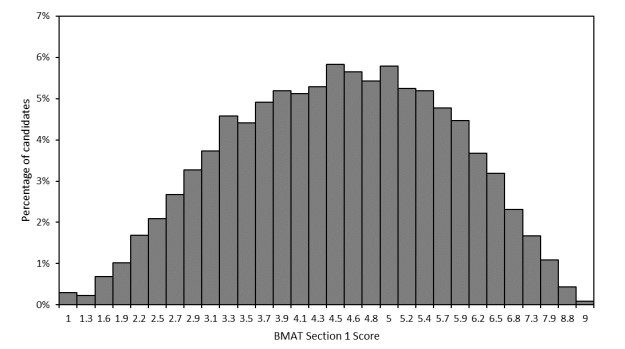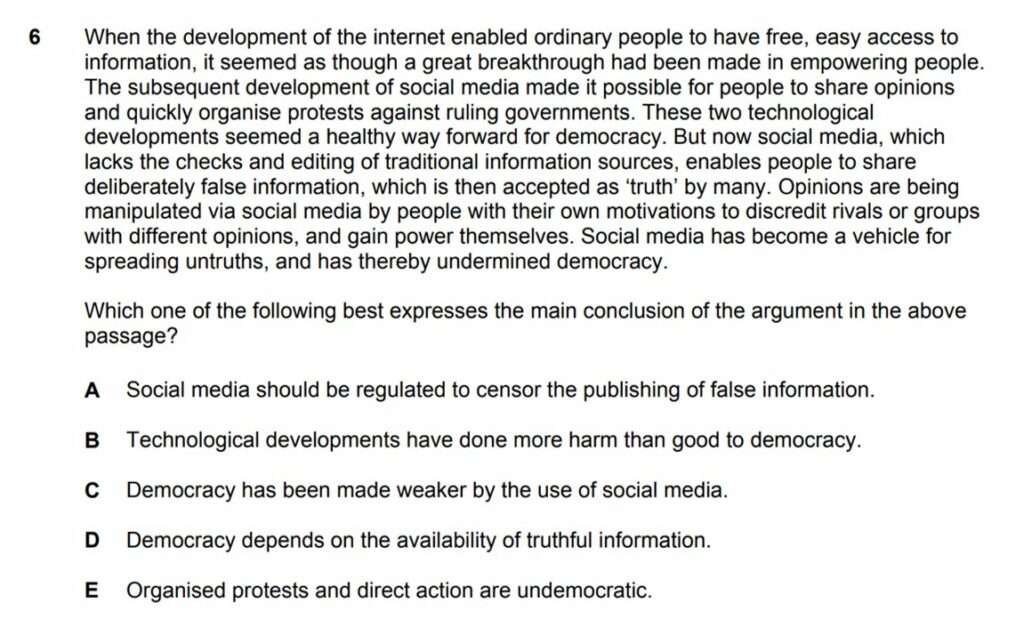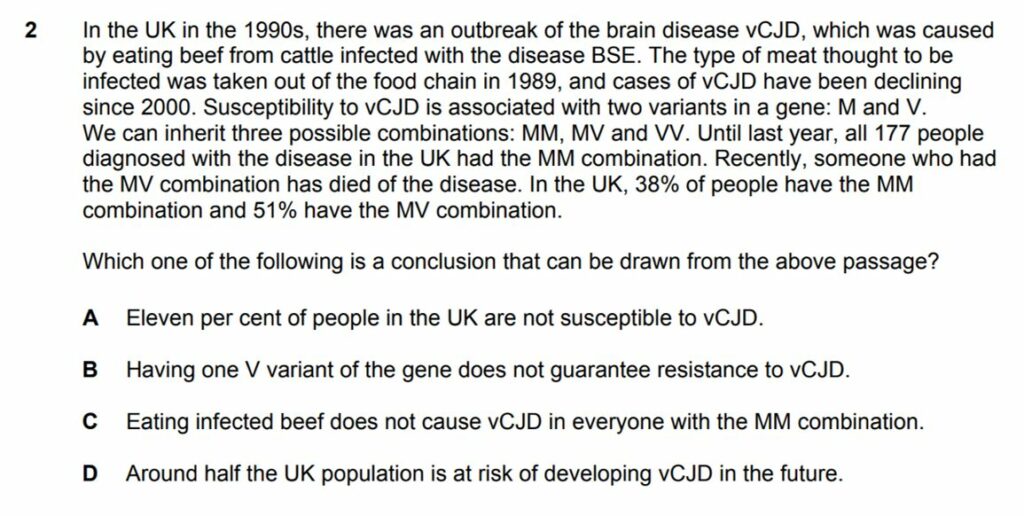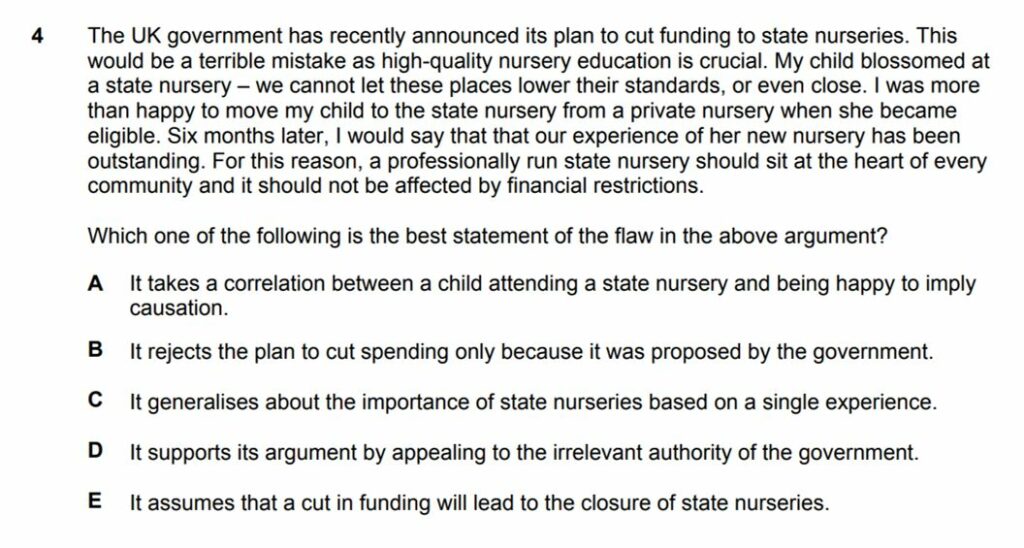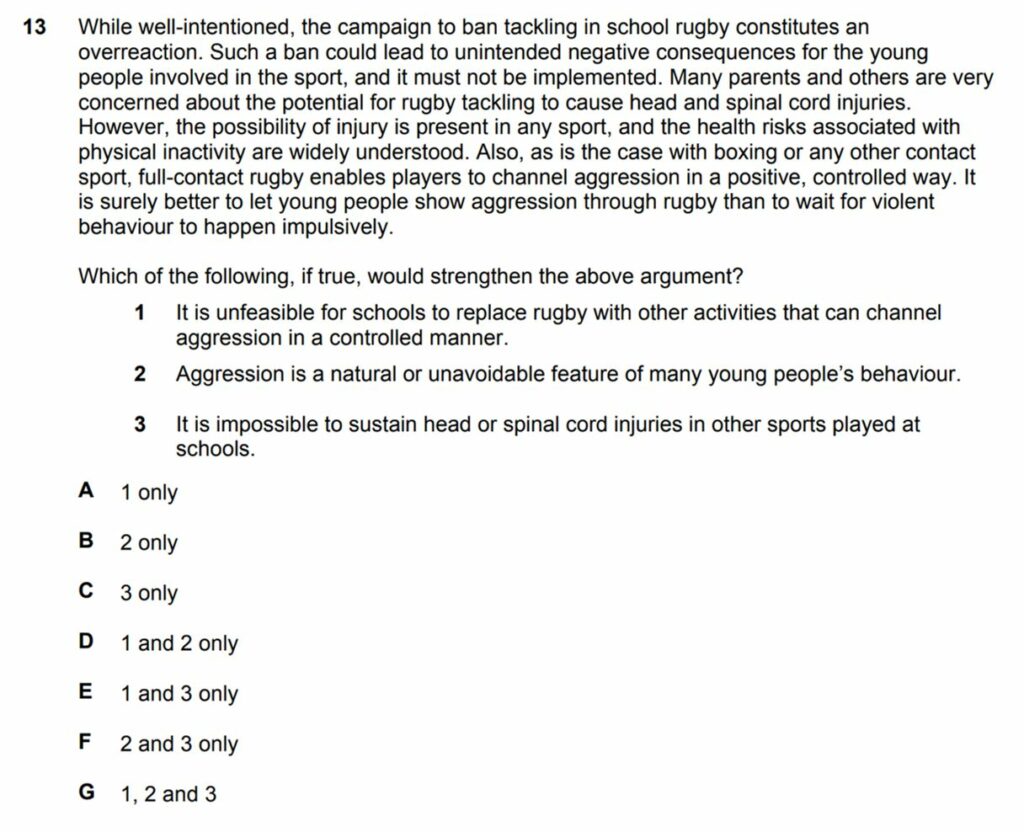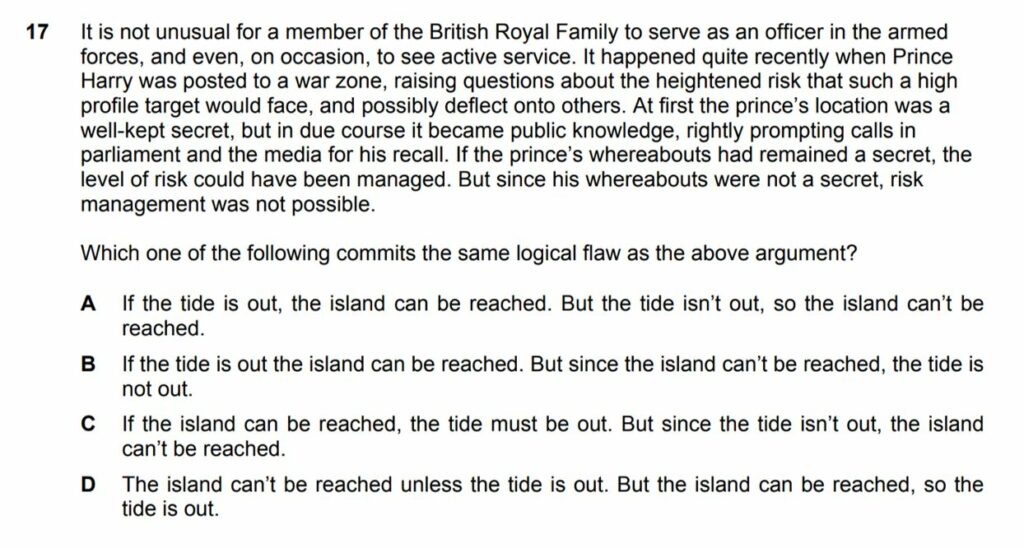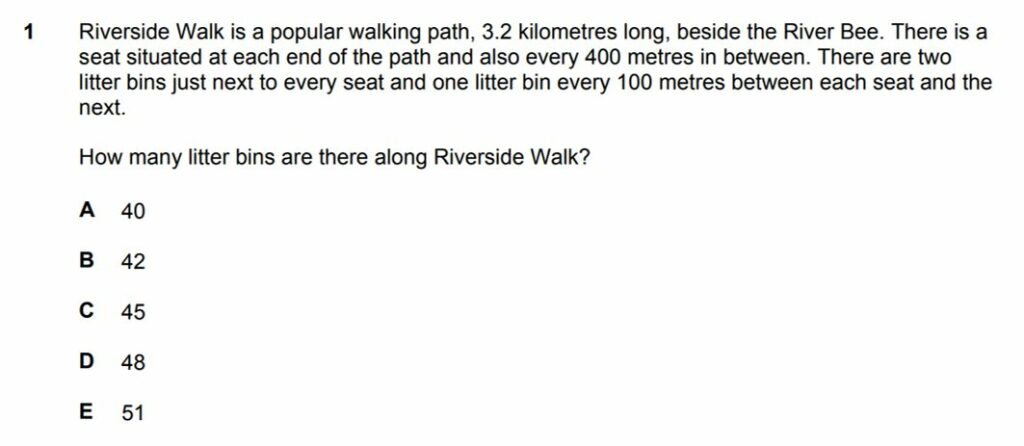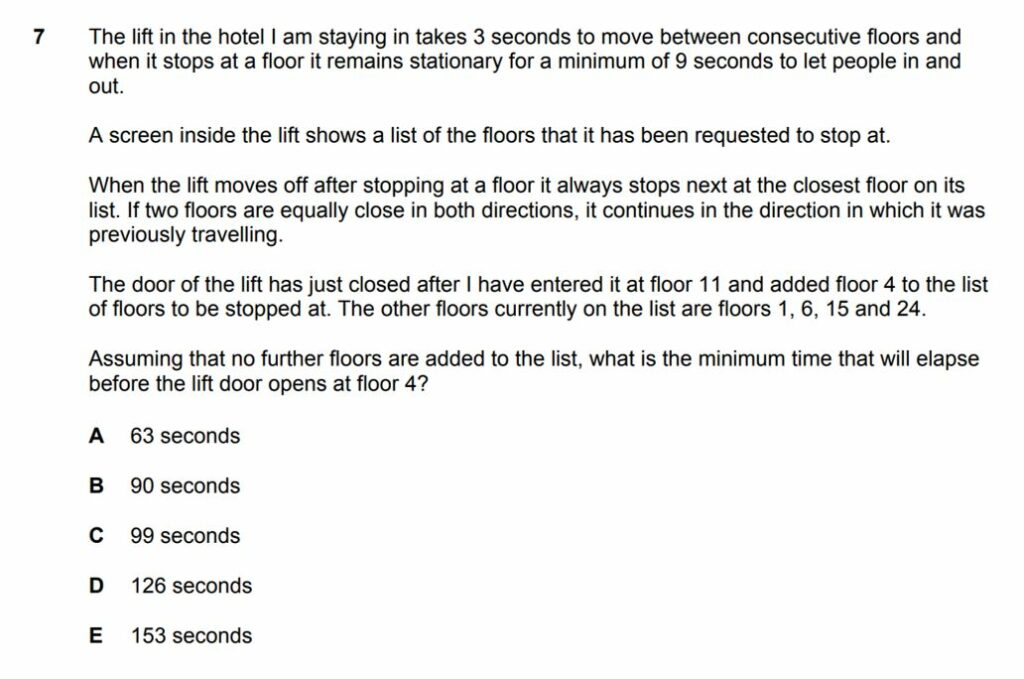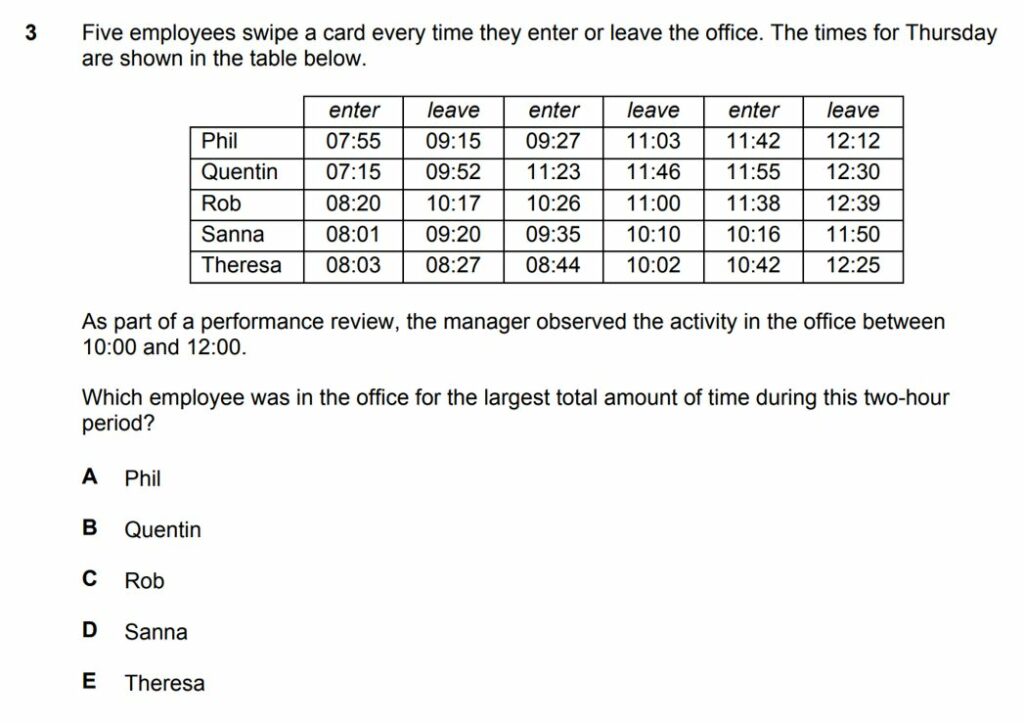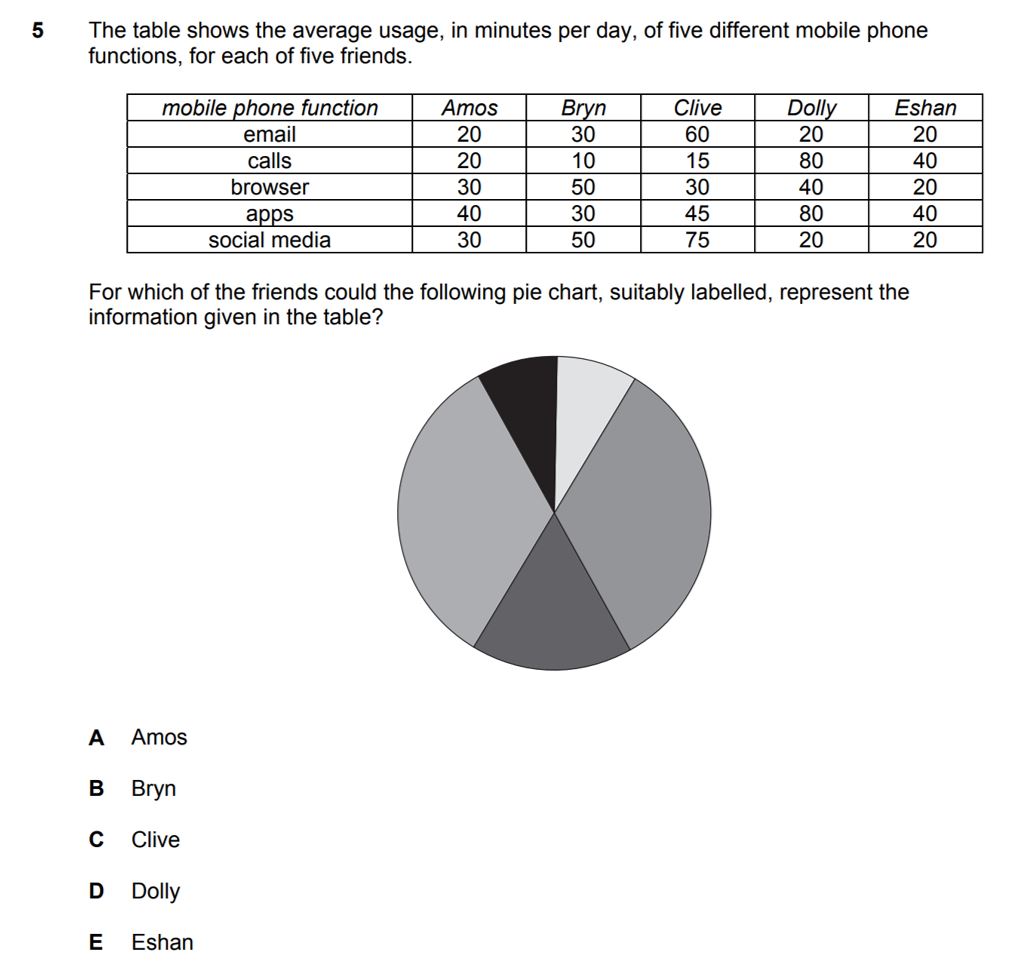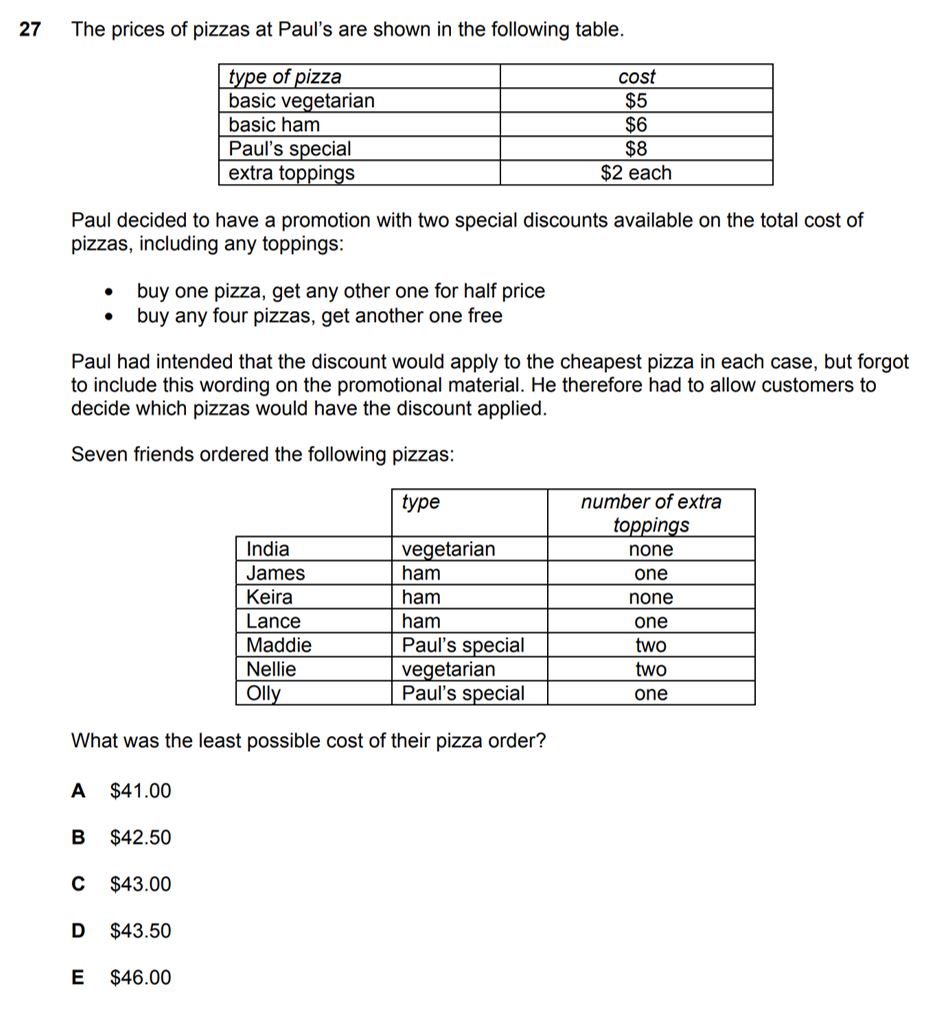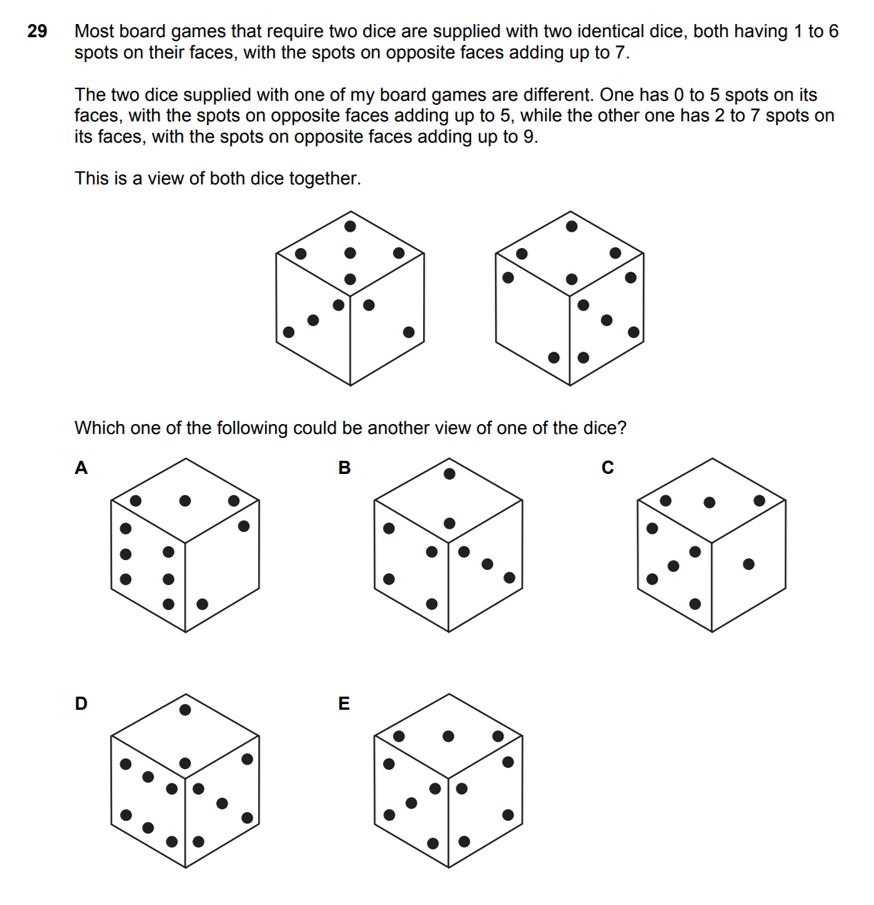Section 1 of the BMAT is, of course, your first step into the medicine admissions assessment. This section is all about Thinking Skills which, unlike Sections 2 and 3, you should be familiar with from the UCAT. They’re not identical though, so let’s take a look at everything you need to know to ace the first section of the BMAT!
The Basics of the BMAT
Since this guide is about Section 1, this might be your staring point for the BMAT entirely! We would highly recommend checking our BMAT Introductory Guide before going further here, but we’ll just go over the basics here as well.
The BMAT is an admissions exam you sit if you’re applying to study Medicine, Biomedical Sciences or Dentistry at some universities. There are far fewer universities in the UK that require this exam compared to the UCAT (although there is a wide variety of international medical schools which require it). Therefore, depending on your medical school choices, you may not need to sit the BMAT if you are only applying to UCAT universities. Below you can find the full list of UK Medical Schools which require the BMAT:
| Universities (which require the BMAT) | Which courses require the BMAT? |
|---|---|
| Brighton & Sussex Medical School | A100 Medicine |
| University of Cambridge | A100 Medicine |
| Imperial College London | A100 Medicine |
| Keele University | Only for overseas fees’ applicants for A100 Medicine |
| Lancaster University | A100 Medicine and Surgery (and the A104 course with a Gateway year) |
| Leeds’ School of Medicine | A100 Medicine (and the A101 course with a Gateway year) and A200 Dentistry |
| University of Oxford | A100 Medicine*, BC98 Biomedical Science*, A101 Graduate Medicine |
| University College London | A100 Medicine |
| University of Manchester | For some groups of international applicants for 106 MBChB Medicine and A104 MBChB Medicine with foundation year – see website for full details) |
As you can see, some of the top medical schools in the UK use the BMAT, including Oxford, Cambridge and UCL, so this clearly isn’t going to be an easy admissions test. You can learn more about how these universities use your BMAT score in our BMAT University Guide.
BMAT Structure
The BMAT lasts a total of 2 hours and is split into three separate sections:
Each Section is sat ‘separately’, so you do Section 1, and at the end of the hour, you hand in your paper. Then you get given Section 2 to do and so on. Calculators aren’t allowed during any part of the exam.
BMAT Time Pressure
The biggest challenge in the BMAT is the time pressure. The questions themselves are tough but certainly do-able if you had all the time you wanted. However, in the exam, you only get 112 seconds per question in Section 1.
That means you’ve got to be really ruthless with how you approach the exam. If a question looks tough, skip it and come back. If you’ve spent a minute barking up the wrong tree, just make the best guess and move on. There’s no negative marking, so you don’t need to spend ages on the first few questions only to run out of time and miss a load of easy ones at the end.
This change of mindset is something loads of students find really tough because it’s very different from exams you’ve done in the past. It goes against the natural instinct to want to try and get every question right. Those students who can appreciate it and change will be the ones who do better, so it’s important to get used to this.
How is the BMAT Scored?
The BMAT uses 2 separate marking methods; one for Sections 1 and 2 and one for Section 3. This is due to the different question types, as the first two sections are multiple-choice and Section 3 is an essay.
BMAT Sections 1 & 2
These questions are initially marked based on the number of answers you get correct, creating your raw mark. There is no negative marking, so incorrect answers do not affect your score.
Your raw marks are then converted into a BMAT score that sits on a scale between 1.0 and 9.0. Each section is marked separately, so you will have a seperate score for each (although some universities will combine these scores or convert these scores into their own ranking method). Also note that each section will have a different conversion table that changes from year to year.
BMAT Section 3
As this is an essay, the marking isn’t as simple as counting the amount of correct answers. For the BMAT, a scoring format was create to rank both the quality of content and the quality of language:
| Quality Of English | Quality Of Content | ||
|---|---|---|---|
| Band A | Good use of English – clear, fluent, good use of grammar and vocabulary | Score 1 | The essay has some bearing on the question but does not address it fully |
| Band C | Reasonably clear use of English – reasonably fluent, some errors | Score 2 | Addresses most of the question, but has significant elements of confusion |
| Band E | Rather weak use of English – not easy to follow, faulty grammar | Score 3 | Reasonably well-argued, may have weakness in the argument |
| Score 4 | Good answer with few weaknesses, all aspects of the question are addressed | ||
| Score 5 | Excellent answer with no significant weaknesses | ||
When marking essays, two examiners are required to mark each one in order to avoid bias. If their scores differ by 1 point, the average of the two will be used (which is why you will see scores like 3.5A)
All universities will consider Section 3 in some form, although some will not take the language ranking into account.
To learn more about how the BMAT is scored, including how scores are converted and what would be considered a “Good BMAT Score”, check out our BMAT Scoring Guide.

Need some help boosting your BMAT Section 1 score?
Learn everything there is to know about the BMAT, with our BMAT Bundle and be guided by tutors who scored in the top 10% – meaning you’re truly getting expert help.
BMAT.Ninja
BMAT.Ninja
Need some extra guidance in boosting your BMAT Section 1 score?
Learn everything there is to know about the BMAT, with our BMAT Bundle and be guided by a tutor who scored in the top 10% – meaning you’re truly getting expert help.
Want to learn how to smash the BMAT, then this bundle is the one for you…


What is BMAT Section 1?
We’ve briefly touched upon what you can expect from Section 1 of the BMAT, so now it’s time to go deeper!
What do we know already? Section 1 of the BMAT is a one-hour long test of thinking skills which sees you answering 32 multiple-choice questions. What do we mean by thinking skills though?
BMAT Section 1 is further split up into two parts focusing on two different skillsets. These are:
These two question types will test you on very general skills that will be incredibly important in all aspects of the medical field. They cover verbal, logical and mathematical abilities which aren’t specific to any subject, meaning this section isn’t going to require any content knowledge.
BMAT Section 1 Scoring
Section 1 of the BMAT is scored out of 32 total marks which are converted to a scale from 1.0 to 9.0. This isn’t a linear scale and will change slightly from year to year based on a few different factors.
Take a look at the results from 2020 and 2021:
BMAT Section 1 Score Distribution Chart 2021
BMAT Section 1 Score Distribution Chart 2020
In Section 1, 25% of test-takers scored between 5.0 and 6.1 and 10% of applicants scored over 6.2 in 2020. Meanwhile, 2021 had a much narrower window of record scores, with ~63% achieving a score between 3.5 and 5.5. It’s uncommon to get higher than 6.0 in either section of the BMAT, but achieving a score on that level will be extremely valuable to your application.
So, we’ve discussed just about everything in Section 1 of the BMAT, except the actual questions! So now it’s time to move onto what you need to study and prepare for, starting with critical thinking.
BMAT Critical Thinking
Critical Thinking is an important skill for doctors and scientists. A lot of things in science are not known for sure, so the ability to understand and evaluate arguments is critical for you to form your own viewpoints. Therefore, admissions teams want to see applicants demonstrate these skills, hence it’s inclusion in the BMAT.
How do these questions work exactly? You’ll be given a block of text to read (usually 4-5 lines), making an argument for or against something. The topic could be anything, and while this can be a bit off-putting, everything you need to answer the question is in the passage, you don’t need your own knowledge. On that same note, even if you happen to be an expert on the topic, don’t bring in your own knowledge – the passage is all that matters and any external information will have no relevance to the question!
The topics can be on anything, but there are only 6 overall question types that you actually need to be prepared for. They are as follows:
- [1] What is the main conclusion of the passage?
- [2] What conclusion can be drawn from the passage?
- [3] Identify an assumption.
- [4] Identify a flaw in an argument.
- [5] Which statement strengthens/weakens the argument?
- [6] Which option parallels the reasoning used in the above argument/best illustrates the principle underlying the argument (logic).
The best way to effectively explain how these work is to look at some practice questions and worked solutions, so let’s get straight into it!
BMAT Critical Thinking Practice Questions and Worked Solutions
[1] What is the main conclusion?
The conclusion here is given to you at the end of the passage. ‘Social media…has undermined democracy’ is analogous to ‘democracy has been made weaker by the use of social media’.
It won’t always be as clear cut, and sometimes the conclusion will be embedded in the middle of the passage.
The most common incorrect answer students put here is B, and this shows how you really need to pick out the information in the passage and be specific.
Yes, social media is technological development, but the passage states that the internet helped democracy by empowering people, and there’s no way from the passage to tell the relative impacts.
This is a common theme that will come up time and time again. Look for the most specific conclusions, rather than grand sweeping statements. The bigger the statement, the more likely an assumption or a flaw is undermining it.
[2] What conclusion can be drawn from the passage?
Let’s look at what we’ve been told.
- cVJD is a brain disease caused by eating infected beef
- Infected cows aren’t around anymore
- The gene to do with cVJD has three combinations
- Everyone who died of cVJD had MM until last year -> so this is going to be the bad variant
- One person with MV died
- 38% of the population has MM and 51% has MV variants
Now let’s look at the options.
| A. 11% of the population are not susceptible to vCJD | This option is concluding that having the VV variant makes you immune to vCJD. This is incorrect, as it’s making a lot of assumptions not given to us in the passage. There’s no evidence to suggest that VV people are immune, it just assumes that because no one with VV has died, they must be immune. However, there are several problems here. Only 177 people have died, so you’re looking at a very small sample size, and it’s a small minority of the population who are VV as well. Also, it’s taken 18 years or so for the first MV variant patient to die. Perhaps the variant you have affects how quickly you die, and in 20 years’ time from now we might see VV deaths. |
| B. Having one variant of V does not guarantee resistance to vCJD | This is the correct answer. This is a simple conclusion, going directly and only off what information is given in the passage. One person with MV has died, so therefore V does not guarantee resistance. |
| C. Eating infected beef does not cause vCJD in everyone with MM combination | This is a more subtle incorrect answer. Given only 177 people have died of cVJD and MM is really common in the population, you could be forgiven for reaching that as a conclusion. However, there is nothing concrete in the passage to back that up – it’s assuming lots of people ate infected beef, when perhaps only those 177 people did, there’s no way to tell. |
| D. Around 50% of the population is at risk of developing vCJD in the future | This is like C. Yes, 50% of the population are MV and we now know they are susceptible, but we don’t know how many of them ate infected beef. |
[3] Identify an assumption.
Taking it right back to basics, what is an assumption?
An assumption is something that, although unstated, needs to be true for an argument to be valid. Looking at the passage, there are two parts to the argument for police body cameras.
First is that cameras encourage better police behaviour to the public. Statement 1 would be an assumption underlying this – if you read it through, the level of force the police use must sometimes be excessive, or else they wouldn’t need to be filmed.
Likewise, with the second part which states body cameras are better because officers must warn everyone that they are being filmed, this would only be necessary if the public weren’t aware bystanders were filming them, making statement 3 a true assumption.
[4] Identify a flaw in an argument.
The correct answer is C.
Often these questions look a bit intimidating, but simplicity is key. This is a classic example where one experience is used to justify a viewpoint.
Often, the flaws are things we talk about in science all the time – not doing repeats to ensure reliable results and saying something is true or false all the time (which is really hard to prove).
[5] Which statement strengthens/weakens the argument?
There are two parts to these questions, but hopefully, they’re reasonably straightforward.
First, you need to understand what the passage is arguing. In this case, rugby and other contact sports allow young people to channel their aggression, so that they aren’t going to be violent in the community/outside sport.
Then go through the statements and decide if they would strengthen or weaken the argument, as the question demands. Often the options will provide more information or clear up an assumption.
Statement 1 supports the argument, as it says rugby is the only form of controlled aggressive sport you could play in school.
Statement 2 also supports the argument, as it gives more weight to the point that without rugby, young people will be violent in the street.
Statement 3 weakens the argument as it says that rugby is the only school sport where head or spinal cord injuries are possible, so there must be better ways for children to be active.
[6] Which option parallels the reasoning used in the above argument/best illustrates the principle underlying the argument (logic).
The key sentences in this passage are the last two: If the prince’s whereabouts had remained a secret, the level of risk could have been managed.
But since his whereabouts were not a secret, risk management was not possible’. There’s a couple of ways you could run with this.
One would be to try and draw parallels between the options.
Here, the tide is analogous to the prince, and the island is the risk. The tide being out is like the prince’s whereabouts being known, and if the tide is out the island can be reached (aka the prince is at risk).
So therefore, if the tide isn’t out, the prince’s whereabouts aren’t known, and the island and the prince can’t be reached.
This might not work for you, and that’s OK, find what works for you!
If you’ve got a bit of time before the exam, it’s worth having a look at some logic stuff, it’s really interesting and it’s quite handy to know some when you debate mates studying philosophy!
Otherwise, just go through the past papers and find a way that works for you, and again remember we aren’t aiming for full marks. Think tactically, if it doesn’t seem obvious just guess and move on. You lose nothing and the time you gain might help you answer the rest of the questions.
This last question type is a bit more uncommon than the other 5, as from time to time the examiners like to chuck in a more out-there logic puzzle.
Don’t worry if you’ve never studied philosophy or logic formally before, you can still work it out your own way, just have a think and remember if you aren’t getting anywhere after a minute or so just guess and move on.
BMAT Critical Thinking Tips
Here are a few tips to help you in your during Critical Thinking questions:
- Always read the question first. In some exams similar to this, advice is to not read the passage at all and go straight to the question. The passages in the BMAT aren’t long, so it’s still worth going through them, but it’s always best to read the question first, as you will then be able to look for anything relevant when reading the passage.
- Stick to what the question asks. If the question is asking about the conclusion to be taken from the passage, you’re more than likely going to find this at the end, so focus on analysing there.
- Use process of elimination. Be sure you understand all of the options in the answer key, and rule out options as you analyse the passage to make the final decision easier.
- Don’t spend too much time. Remember, you don’t have too much time per question here, so don’t spend ages trying to decide between two options. If you really can’t figure out which is correct, just make a guess to give yourself a chance of gaining the mark.

Prepare for the BMAT with expert support from 6med.
Ace the BMAT with comprehensive support from 6med. Access expert revision and practice materials as soon as you sign up.
BMAT Online Course
BMAT Online Course
Need some extra guidance in boosting your BMAT Section 1 score?
Learn everything there is to know about the BMAT, with our BMAT Bundle and be guided by a tutor who scored in the top 10% – meaning you’re truly getting expert help.
Want to learn how to smash the BMAT, then this bundle is the one for you…


BMAT Problem Solving
This is generally regarded as the second part of the BMAT, although there isn’t any actual order or separation to the question in the exam paper, so neither part is first or second!
Problem Solving sounds like an incredibly generic category that could cover almost anything, but thankfully it’s not that broad. Problem Solving questions in the BMAT are essentially numerical based questions that require some form of mathematics or spacial reasoning to solve. This isn’t pure mathematics that your would see in a typical maths exam, as each problem is scenario based and requires situational context in order to answer correctly.
But how does this relate to medicine? Being a doctor is all about solving problems. A patient comes to you with a variety of signs and symptoms, and from this limited information, it’s up to you to come to a diagnosis. Whilst in the BMAT, they can’t get you to diagnose patients but they can test your ability to solve problems where the information isn’t all there and the approach to the problem is hidden.
The question types are generally much more varied than the Critical Thinking questions, but they can be separated into three broad categories:
An important thing to note is they’ve removed a question style. Previously, you could get given a large block of text with some figures and be asked a set of questions on the data. Keep an eye out for this when you do past papers.
As with Critical Thinking Questions, it’s best to discuss these in the context of actual questions and solutions.
BMAT Problem Solving Practice Questions and Worked Solutions
Let’s start with the “classic” Problem Solving questions you may face in the BMAT. What does this mean exactly? Essentially they are questions that will require you to use verbal and numerical information to work out some form of quantity or sum. This could relate to anything from time to money to something random like ‘bins’, as you’ll see in the first question!
[1] "Classic" Problem Solving Worked Question
The biggest tip for Problem Solving is diagrams are your best friend!
The questions in the BMAT are written to be confusing, to hide the information you need, and to put everything in the wrong order that you need.
Trying to arrange all the information in your head, and solve the question is basically impossible and you’ll likely get into a muddle and use up your 100 seconds.
Make diagrams and arrange the information in a way you can use it. For example, a diagram for this question might look like this:
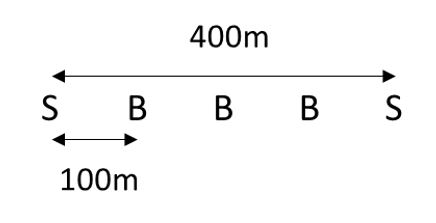
We are told that there are two bins by each seat, so starting from the seat at the start of the walk there are 5 bins in the 400m until the next seat. If the walk is 3.2km long, then there will be 8 lots of 5 bins, plus 2 bins for the seat at the end of the walk, giving a total of 42 bins.
You may be thinking “do I really need to draw a diagram of that, won’t it take too long and it seems a pretty straightforward question”, but the key to the BMAT is exam technique, more so than any exam you’ll have sat before.
The more you practise these questions, the quicker you’ll become at spotting the patterns they use and drawing suitable diagrams. If you just start by drawing a diagram, you won’t waste time deciding whether you need to draw a diagram.
[2] "Classic" Problem Solving Worked Question
It’s for questions like this that drawing diagrams becomes essential. There’s a lot of information to take in here. The key bits to me are the floors on the list, the direction of travel and the time taken.
A good diagram looks like this:
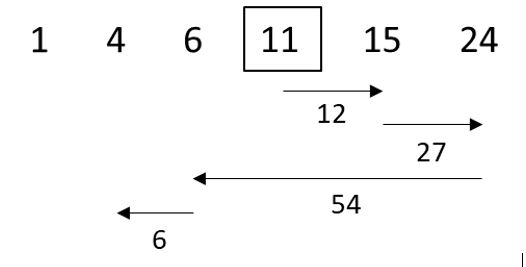
First, the floors have been written in order, so it becomes clear which way the lift will move.
Next, the travel times between floors have been added.
From floor 11, the lift is going to go first to floor 15, as it’s the closest floor.
From 15, floors 6 and 24 are both 9 floors away, however, the lift will continue up to 24 because it is in the direction the lift was previously travelling.
Then the lift will go down to 6, then to 4.
The question wants to know the total time elapsed to travel from floor 11 to floor 4. It takes 3 seconds to travel up or down one floor, so from floor 11 to floor 14 it will take 12 seconds. The lift will stop each floor for 9 seconds.
Totalling up all the time, we get 12 + 9 + 27 + 9 + 54 + 9 + 6 = 126 seconds
Next there are Table and Graph questions. This one is pretty self-explanatory; you’re going to need to use data from a table or graph to answer a question relating to situation the data is based on.
[1] Tables And Graphs Worked Question
Starting with the table, the headings show 5 people and the times they enter and leave the office.
Draw a table showing the time each person was in the office between the hours of 10 and 12, and you’ll see Sanna is clearly ahead.
It’ll look something like this:
| In Office | Total | |
|---|---|---|
| Phil | 10 to 11.03, 11.42 to 12 | 81 |
| Quentin | 11.23 to 11.46, 11.55 to 12 | 28 |
| Rob | 10.26 to 11, 11.38 to 12 | 56 |
| Sanna | 10 to 10.10, 10.16 to 11.50 | 104 |
| Theresa | 10 to 10.02, 10.42 to 12 | 80 |
But an even quicker way would be to look at the time each person was not in the office.
Sanna is not in the office for just 16 minutes, and then working down the list you can see each person has a spell longer than 16 minutes out of the office, so without doing any calculations you can see Sanna is in the office the most.
This is another great trick as there’s often a shortcut you can use – the purpose of these questions is to test your ability to come up with novel calculations and solutions, so be aware that there’s often a better, less obvious way to do these questions.
[2] Tables And Graphs Worked Question
The key here is to not get bogged down reading all the data in the table.
Read the headings, to understand what data you’ve been given, and then read the question to find out what you need to know.
Here, the headings are mobile phone use, a list of people and time spent. The question wants you to pick the person whose mobile phone use matches the pie chart.
By eye, you can see the pie chart splits into 2 1/3rds, 1 1/6th and 2 1/12ths, so the minutes need to be 2 lots of x, 1 lot of 2x and 2 lots of 4x.
Going back to the table, Dolly would fit this (2 lots of 20, 1 lot of 40, 2 lots of 80).
[3] Tables And Graphs Worked Question
This is another question with a lot of information.
Skimming through highlighting the key points, we have the cost of pizzas, details of promotional discounts, a clarifying statement, and a pizza order.
The question asks for the cheapest possible cost of the pizza, so work backwards through the data.
Add another column to the table with the final cost of each pizza including toppings.
| Type | Extra Toppings | Cost |
|---|---|---|
| Vegetarian | None | $5 |
| Ham | One | $8 |
| Ham | None | $6 |
| Ham | One | $8 |
| Paul’s Special | Two | $12 |
| Vegetarian | Two | $9 |
| Paul’s Special | One | $10 |
There are 7 pizzas, so from the promotions, you can get 1 free and 1 half price.
There are no restrictions, so the best way to save money is to make the most expensive pizza free and the second most expensive pizza half price.
This means the final cost is $5 + $8 + $6 + $8 + $9 + $5 = $41.
Lastly there are Spacial Reasoning questions. These ones require a slightly different outlook, as you’re going to be solving problems based on visuals elements. Typically, you’re going to need to provide the correct interpretation of a shape or visual element based on the examples provided to you. Let’s take a look at a question:
[1] Spatial Reasoning Worked Question
The first thing to do is work out what you’re looking at, and which dice is which.
- We are told that on one dice the faces add to 5 and on the other, the faces add to 9.
- We can see 3 and 2 are not opposite each other on the left dice, so that must be the one adding to 9
- Likewise, we can see 5 and 4 are not opposite each other on the right dice so that must be the one adding to 5.
Now we can work through the options, first working out which dice it is and then whether it’s a possible view.
A and B both have the same arrangement of 3 and 2, so are the 9 dice.
We can also immediately eliminate them as options because we know that the 3 and 2 make an arrow towards 5.
C must be the 5 dice, as it has a 1. This view does match up with the dice, so C is the correct answer.
D must be the 9 dice and is incorrect as the 6 should be a 3. E must be the 5 dice and is incorrect because the 3 should be a 2.
Another trick you could use here is to draw out nets.
It’s really common for them to give you cubes or tetrahedrons to interpret, so if you can quickly draw out a net that can really help you visualise the problem.
You might feel silly ripping up a piece of paper in the exam, but nothing is stopping you and if it means you get that extra mark it’s definitely worth it!
BMAT Problem Solving Tips
Here are a few tips to help you solve these BMAT problems:
- You won’t have a calculator, so be sure to practice your mental arithmetic. Look out for numbers that multiply or divide easily, often that’s a hint you need to use them.
- For questions with graphs and tables, start with the headings. This will help you hone in what you need to look out for in the data.
- Cubes and tetrahedrons come up all the time for spatial reasoning, so make sure you’re comfortable in your understanding of them in this context.
Conclusion
That covers all the questions you can expect to see in Section 1 of the BMAT! Exams like these can either be somewhat easy or very difficult depending on the type learner you are. Some people are going to be able to click with this logical manner of thinking pretty quickly, while others may require more practice. It’s not a topic that can be revised for in the traditional sense that you’re likely used to, as their’s no facts to learn or formulas to memorise; it’s all about your method of thinking.
- The majority of your preparation is going to be practice questions and past papers, so do as many of these as you can. You’ll find over 6,000 practice questions available at BMAT.Ninja to try!
- Don’t be afraid to make notes and draw diagrams, as this will allow you to make better sense of the information in the question. Practice doing this quickly so you don’t use up too much time.
- The best way to solve a question may not be immediately obvious, keep an open mind when you’re reading the question.
- To do really well at the BMAT you don’t need full marks, play the game and you’ll do fine!
That’s a lot of stuff to go through in one go! But that’s only 1/3rd of the exam, so be sure to check out our other BMAT Section guides to get a better understand of the whole thing:
No matter who confident you are in the BMAT, getting support is always a good idea in order to boost your chances of success. 6med’s BMAT Bundle will give you everything you need to get a great score in the exam. Or you can guarantee your place in medical school with our Complete Bundle, which guides you through your Personal Statement, UCAT, BMAT and Interview, all in one place!

Need some help boosting your BMAT Section 1 score?
Learn everything there is to know about the BMAT, with our BMAT Bundle and be guided by tutors who scored in the top 10% – meaning you’re truly getting expert help.
BMAT.Ninja
BMAT.Ninja
We've got all the tips and tricks you need to score highly on the BMAT.
With our BMAT Bundle, cover Sections 1, 2 and 3 of the BMAT in detail with tips and strategies to ensure you achieve the highest possible score.
Want to learn how to smash the BMAT, then this bundle is the one for you…


